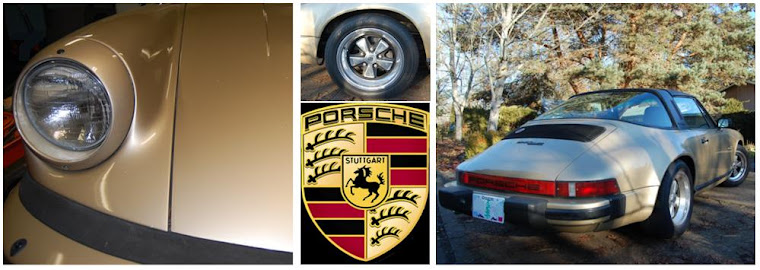The controller is very efficient - somewhere between 94 and 99%. But when a lot of power passes through a system, small percentages can become significant. The controller is rated for 1000 amps peak when air cooled or 1000 amps continuous when water cooled. 1000 amps at 150 volts produce 150,000 watts. At 97% efficiency, the controller generates 4,500 watts of waste heat. My motor and the police will not allow me to draw that kind of power for more than a few seconds. On average, I expect the car to use about 280 watt hours of energy per mile. At 50 miles per hour, we are talking about 14,000 watts of power through the controller. At 97% efficient, the controller needs to dissipate 420 watts. The controller components are mounted on a heat sink with water channels. Water cooling is an effective means of exporting heat from the controller. Cooler electronic components run longer and more reliably.
 |
| Clockwise from the top left: Controller, braided hose, reservoir tank, circulation pump, radiator with fan. |
The cooling loop consists of a water circulation pump, a radiator, reservoir tank, and plumbing. The pump is recommended in the owner’s manual of the controller – a Laing D5 hot water circulation pump. It is designed for solar hot water heating applications and runs on 12 VDC. The radiator is an aftermarket automotive part used to supplement the stock radiator capacity, typically for towing. The reservoir is an expansion tank. It holds 1.25 quarts (1.2 liters) of fluid. It will be located at the highest point in the cooling loop to purge air bubbles and for filling. The fill neck accepts standard radiator caps. I selected a cap rated for 7 psi. The plumbing is steel braid jacketed rubber hose with -6 AN type compression fittings (
http://en.wikipedia.org/wiki/AN_thread).


No comments:
Post a Comment